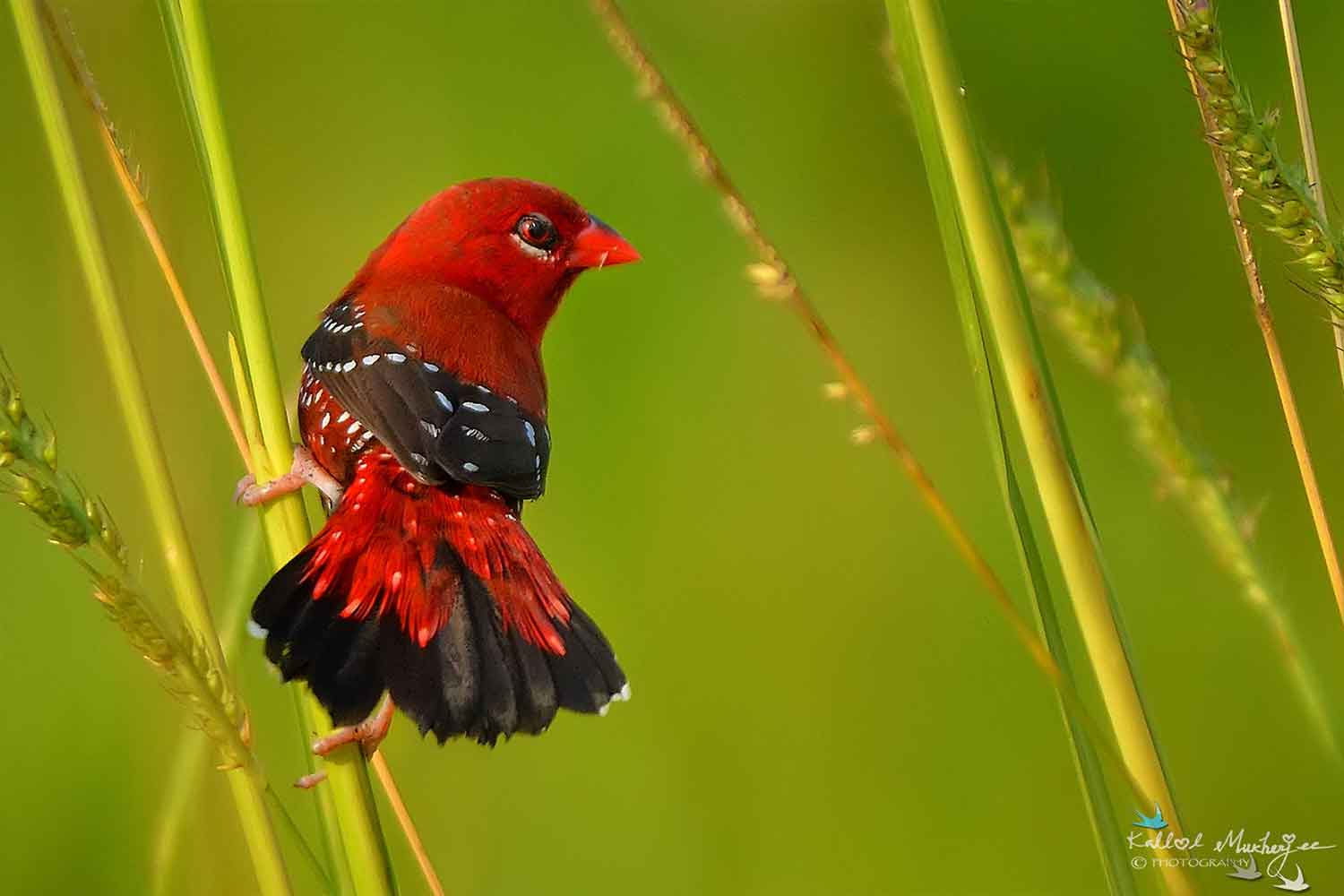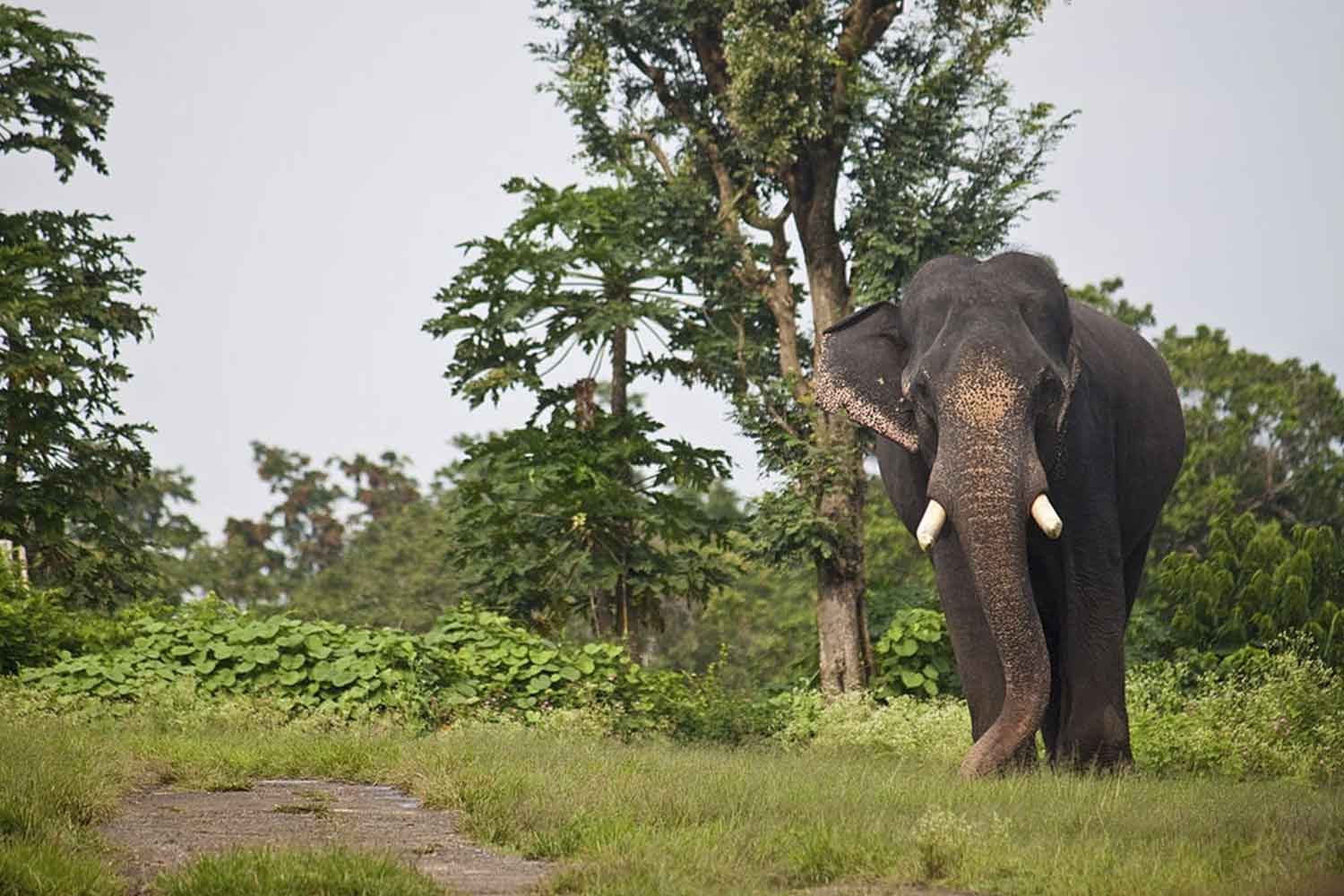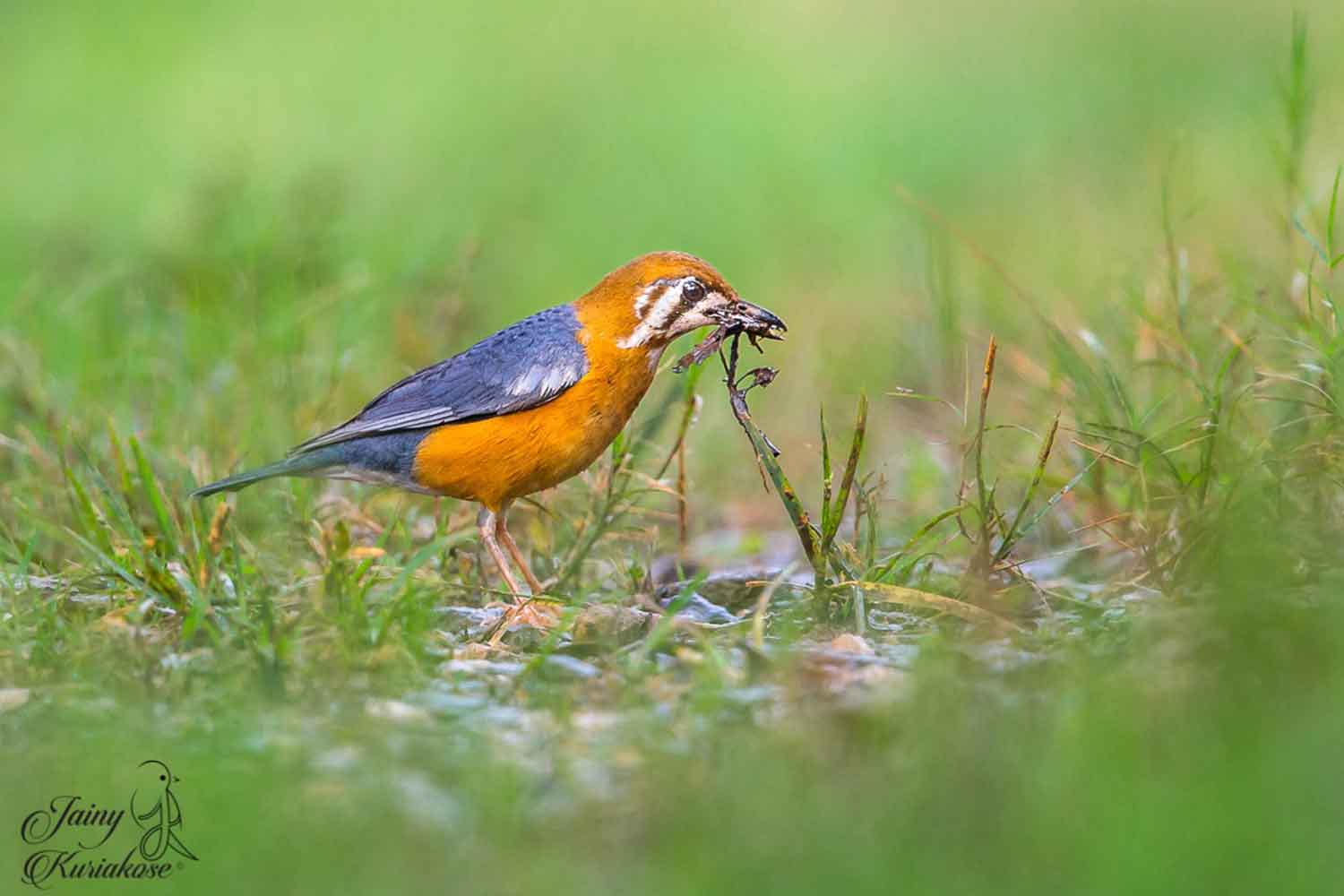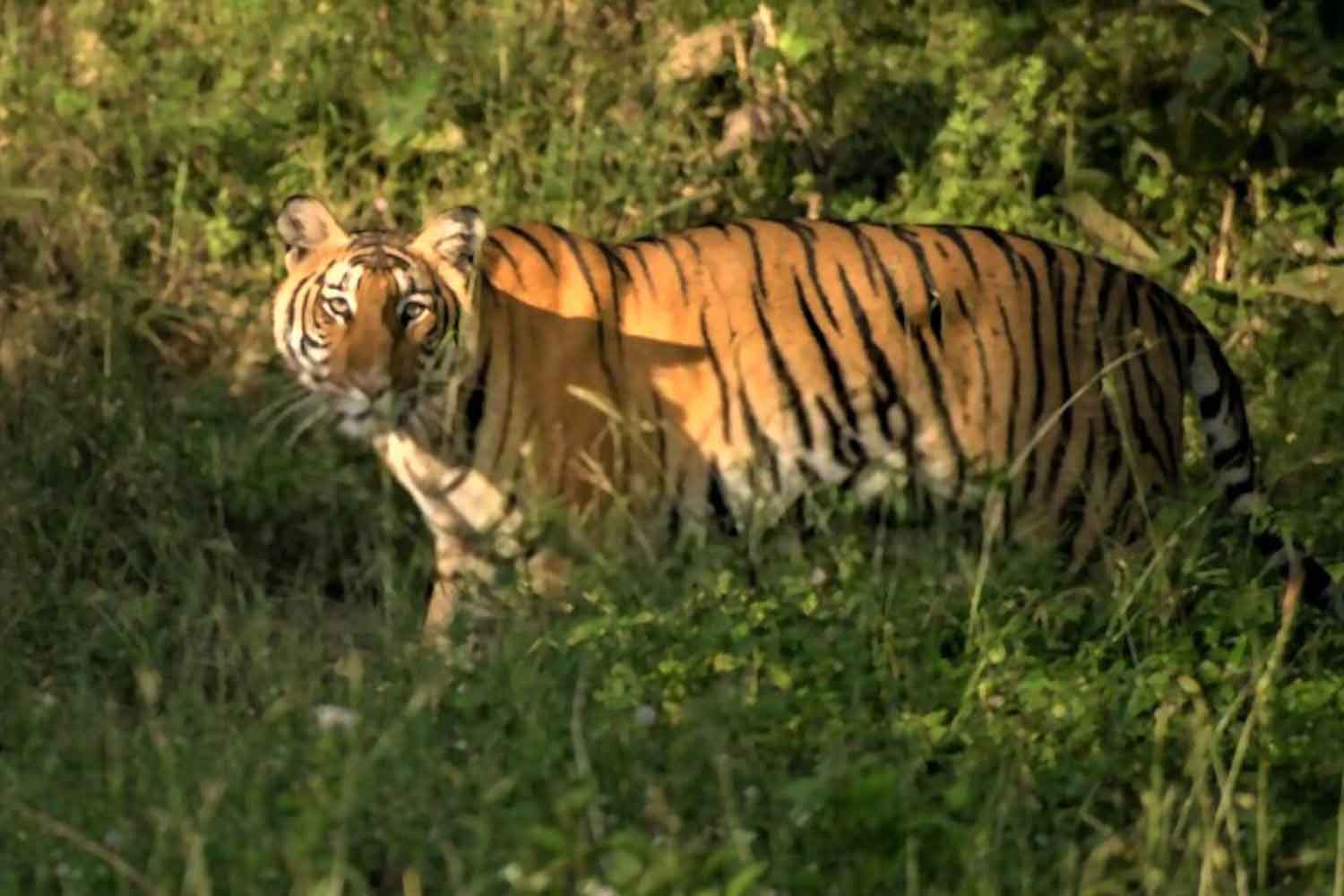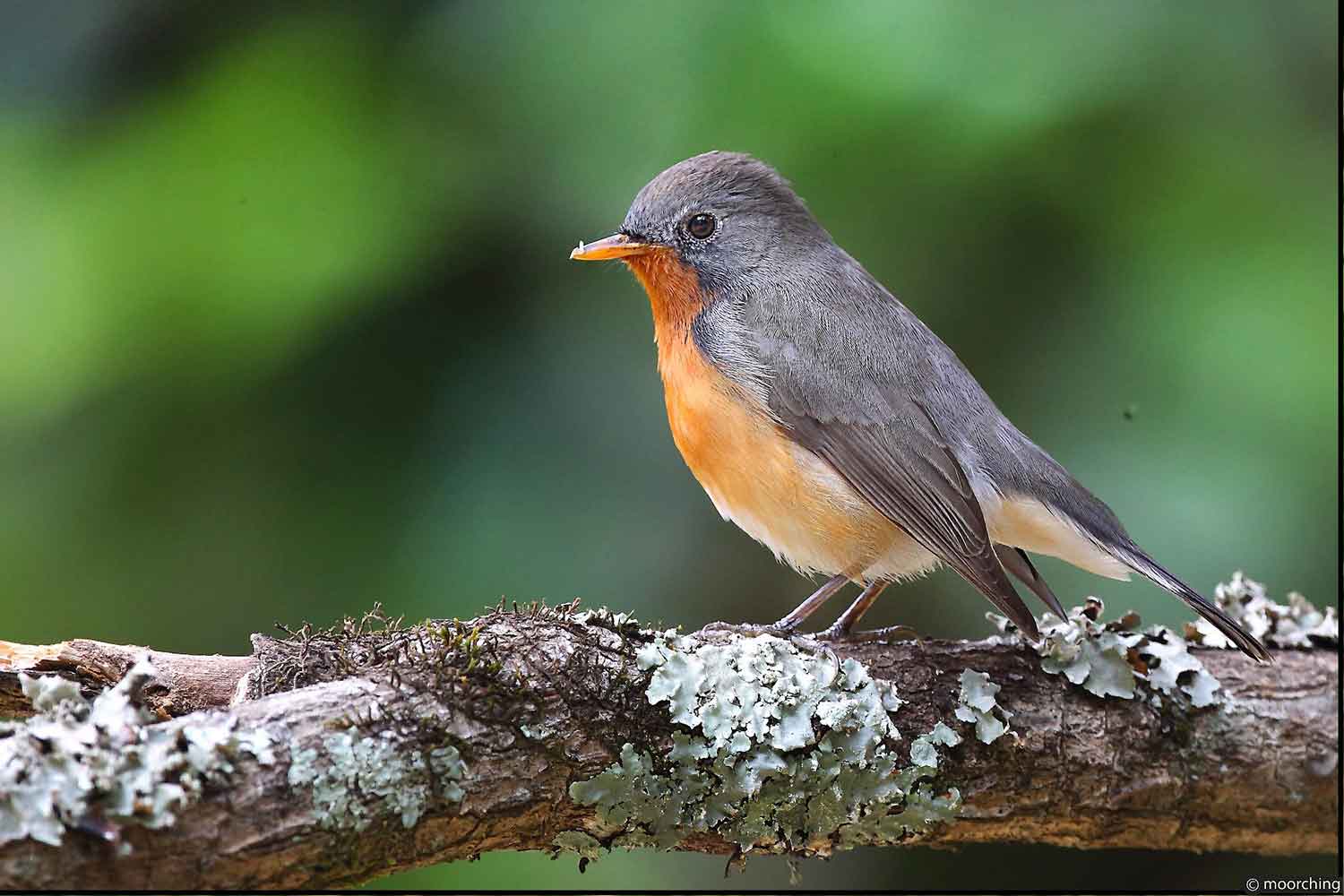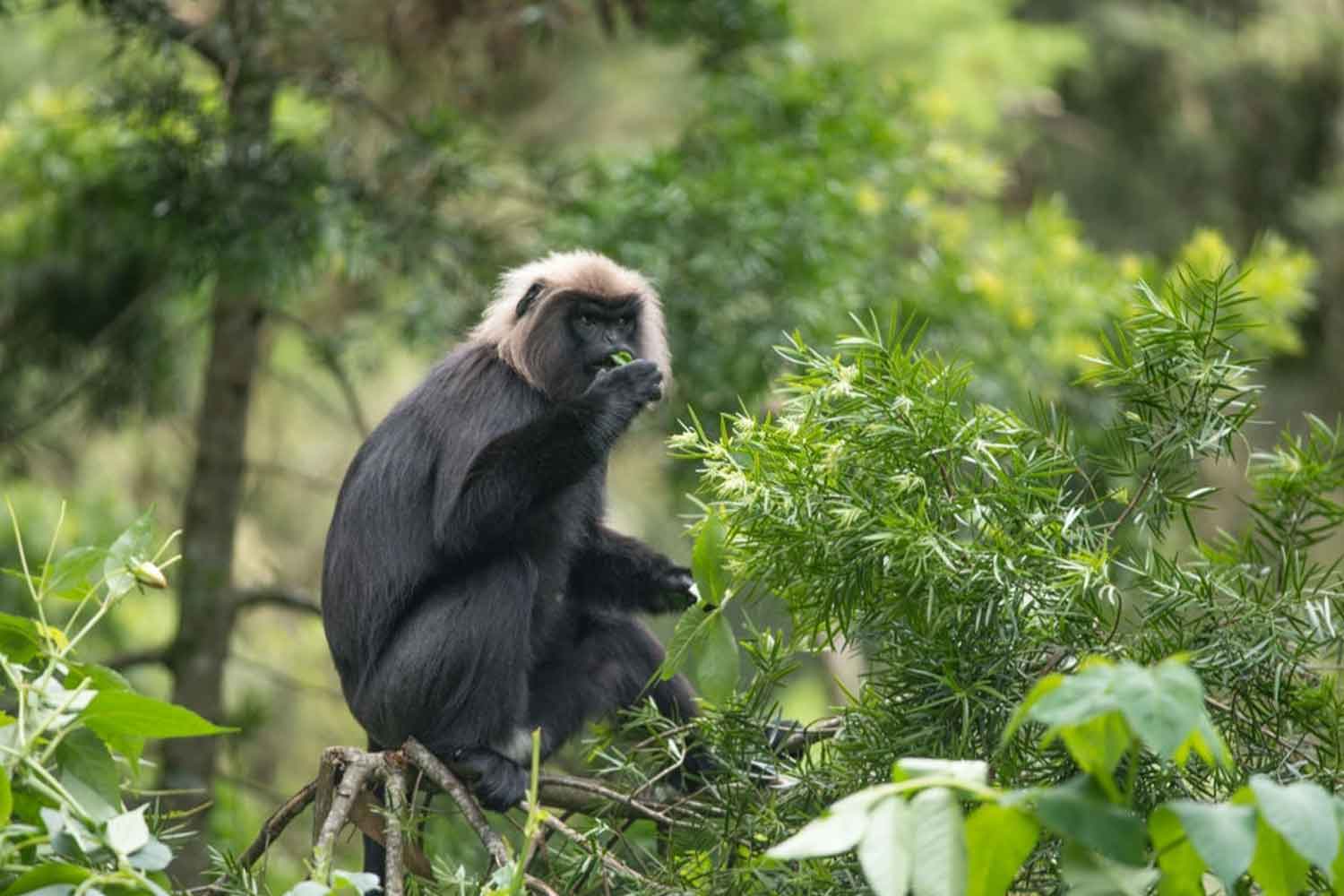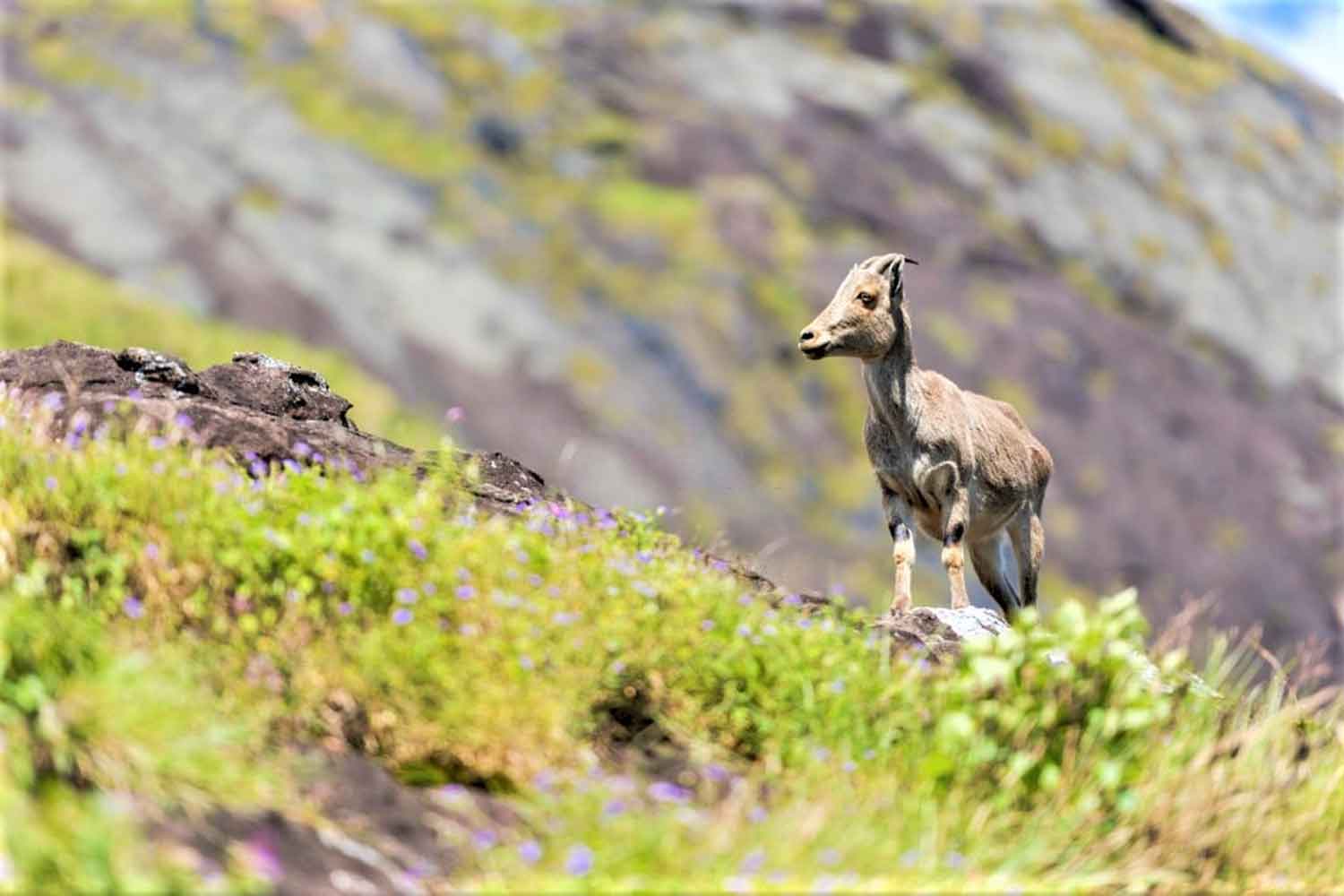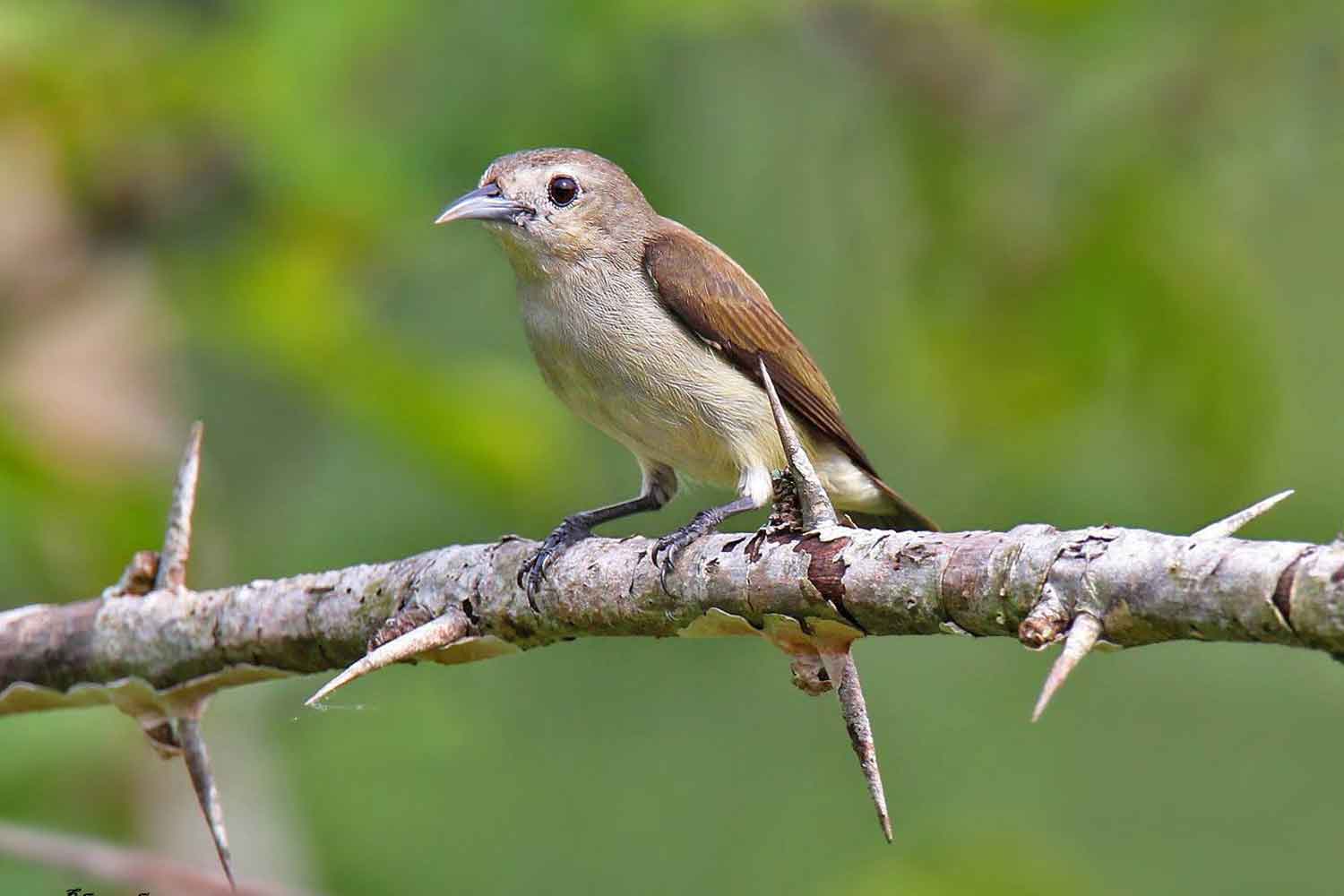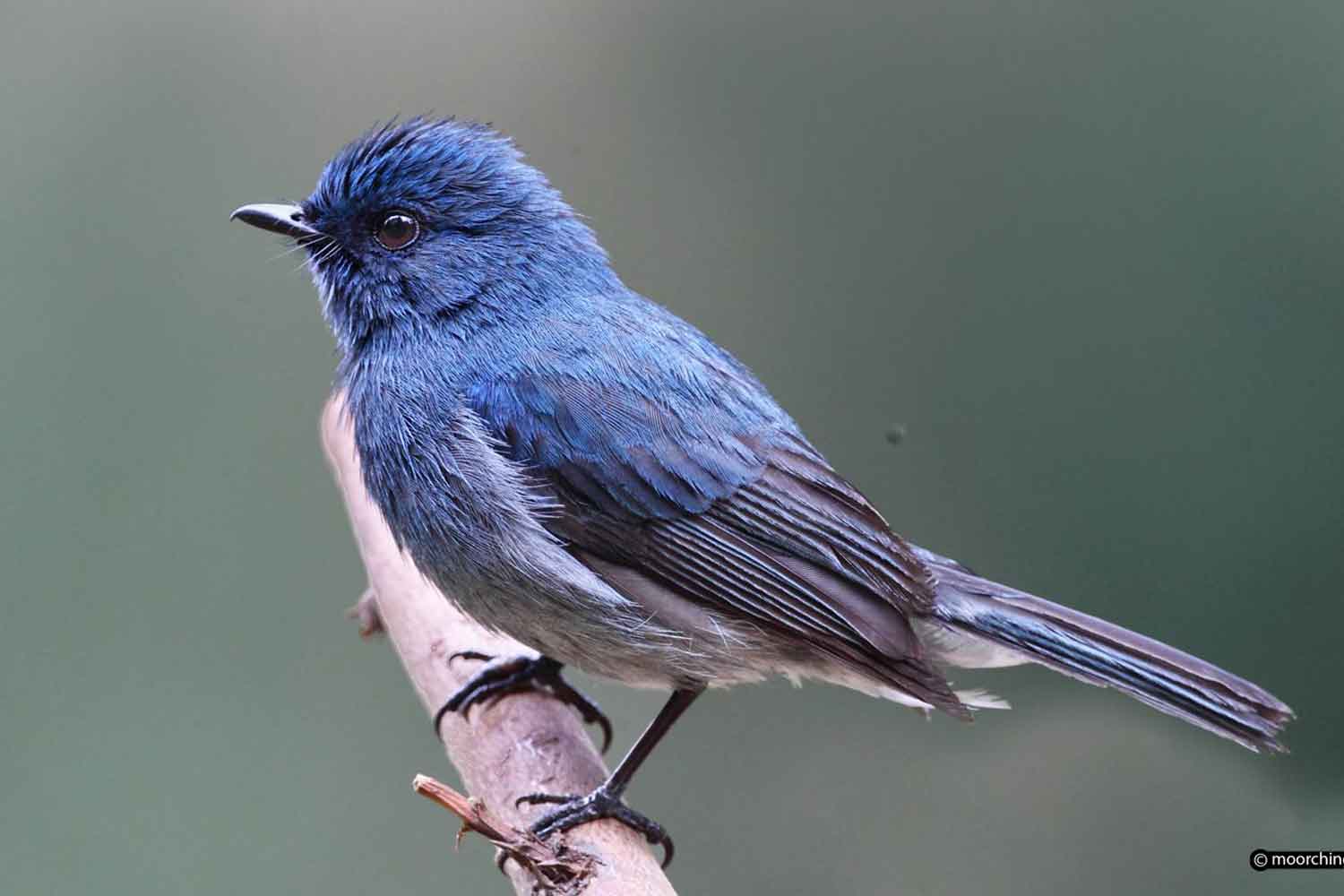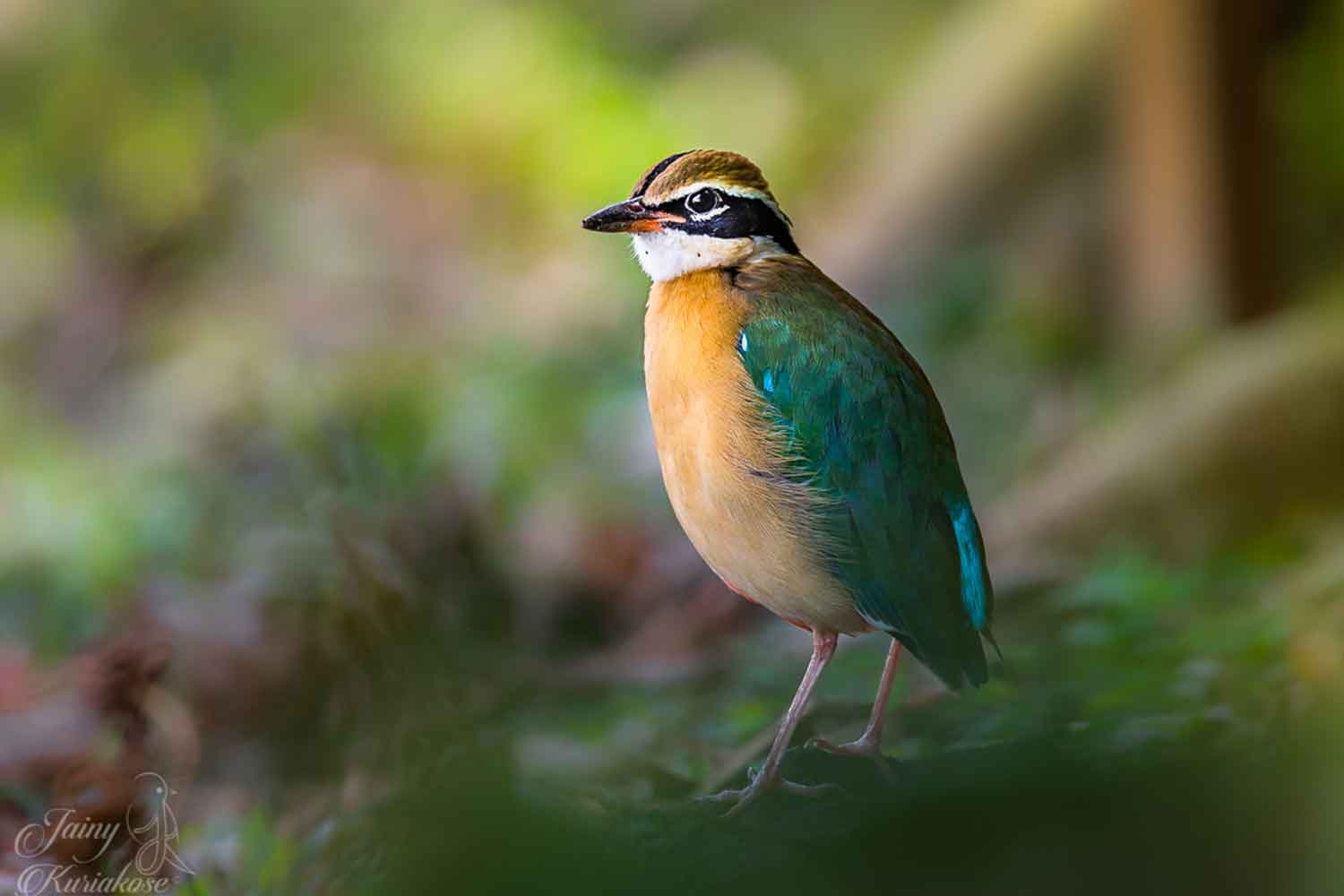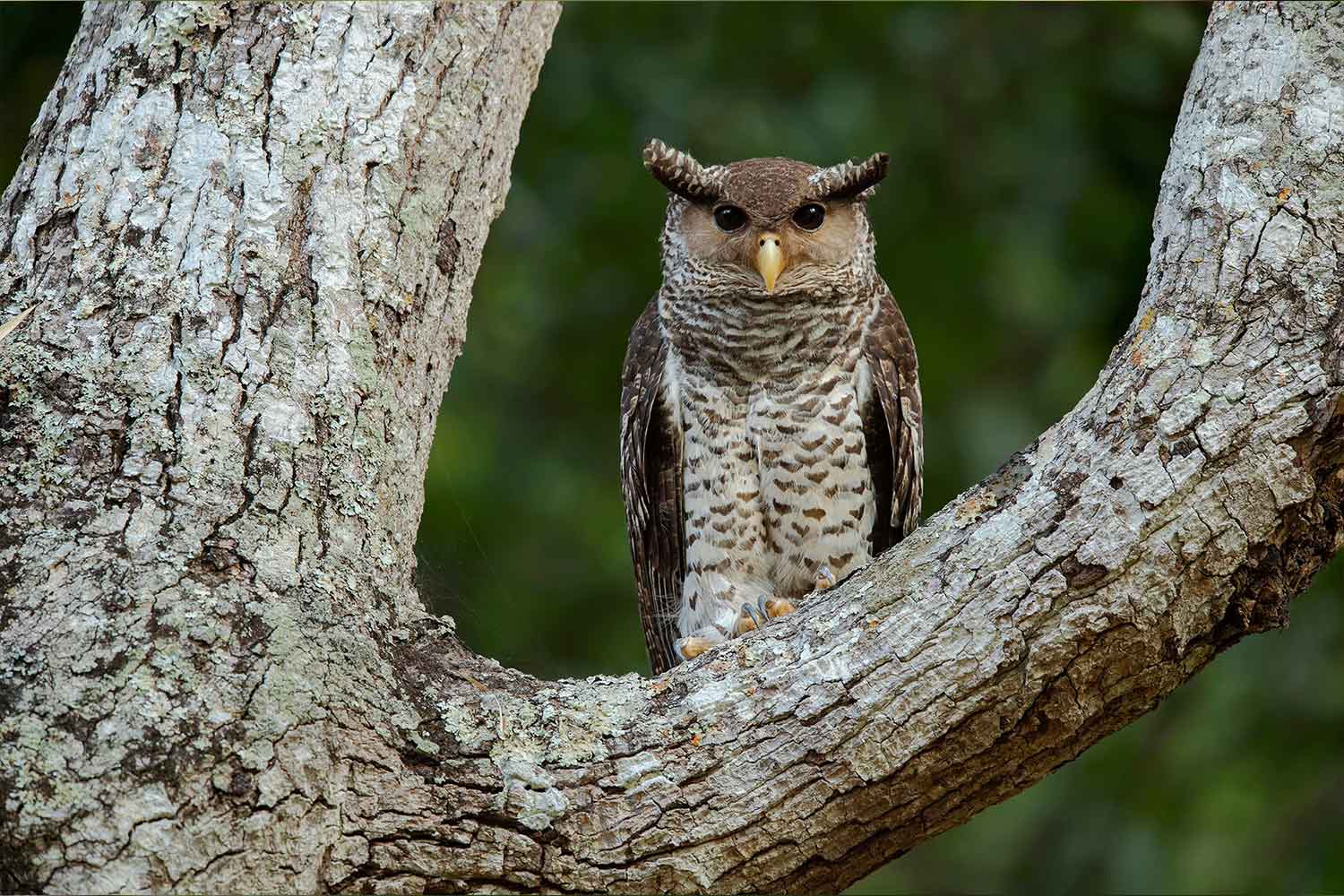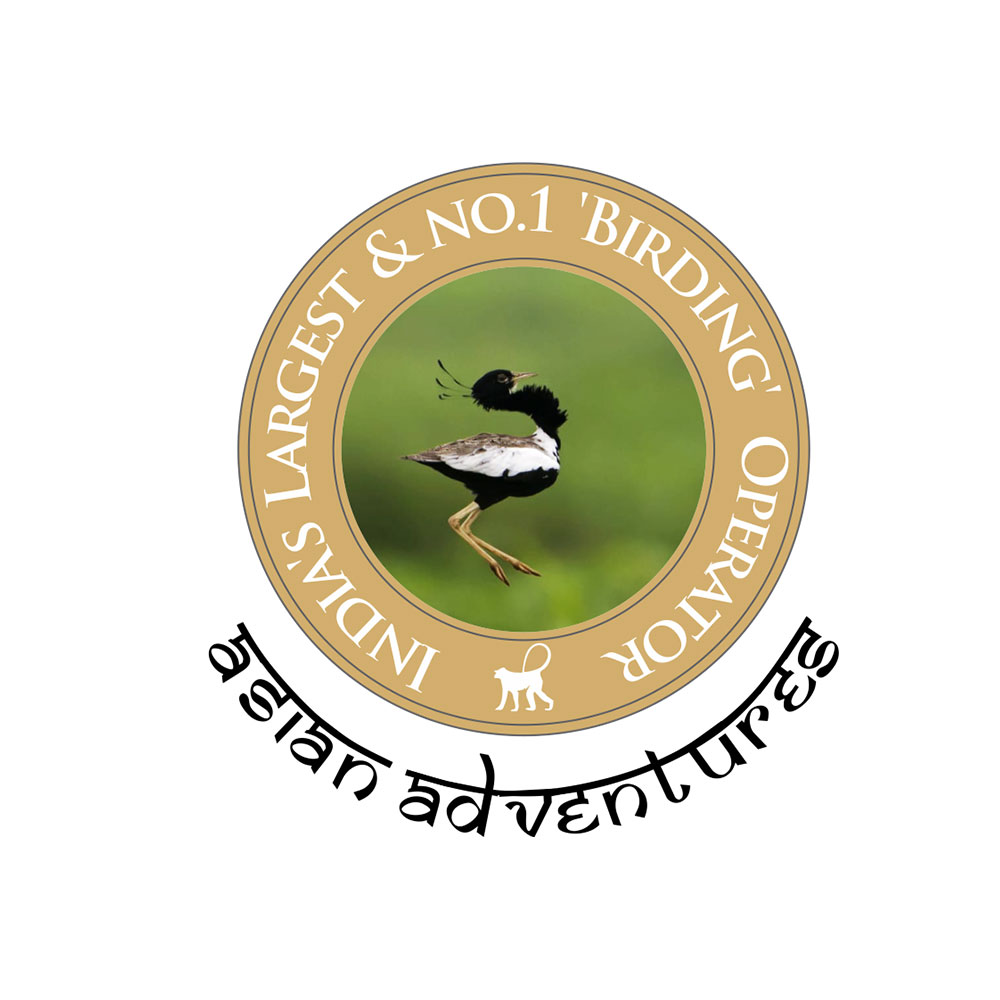Overview
The southern part of India is not as popular as other places when it comes to wildlife, but wrongly so. From lush lowland Edens, to the verdant hill slopes and shola cloud forests of the Western Ghats, the wilds of South India are home to a spectacular array of animals and birds, many of them endemic to the region. This tour takes you to some of the best places in South India, in order to optimize your wildlife and birdwatching experience.
The unique shola ecosystem comprises tropical evergreen forest patches among high-altitude grasslands, peaking at nearly 2,700 meters in Kerala's Eravikulam National Park. The 1,600 km range is divided by the Palghat Gap, creating isolated bird populations and resulting in species diversification, like the Nilgiri Sholakili and White-bellied Sholakili.
The key highlight locations of this tour are the beautiful forests of the Western Ghats, a low mountain range running across the western edge of the Indian peninsula. From grasslands and wetlands to lush evergreen forests and the ‘shola’ cloud-forests, these places are home to a variety of animals, from the iconic Asiatic Elephants and tigers to smaller, more unique animals like Madras Tree Shrew, Indian Giant Squirrel, and Small Indian Civet.
Nearly 40 bird species are endemic here, including the Nilgiri Woodpigeon, Sri Lanka Bay Owl, Malabar Trogon, Sri Lanka Frogmouth, Black-and-orange Flycatcher, Wayanad Laughingthrush, Nilgiri Thrush, and Nilgiri Pipit. The region is also home to endangered mammals like the Lion-tailed Macaque, Nilgiri Tahr, and Nilgiri Langur.

Meals: On Own
Accommodation: Hotel Goldfinch or similar
Welcome to Bangalore, known as India's Garden City, where your adventure begins. Upon arrival, you will be greeted by our representative at the airport, who will assist with your transfer to the hotel.
Here, you will unwind and acclimatize after your journey.
The evening is free for you to explore the vibrant city or relax at your hotel.
Bangalore, with its pleasant climate and green spaces, is an excellent starting point for your journey. The city is a blend of modernity and tradition, offering a unique urban experience before you dive into the wilderness. If time permits, you may take a short walk in nearby parks to familiarize yourself with some common bird species like the Rose-ringed Parakeet and Black Kite that thrive in urban settings.
Your overnight stay will be in Bangalore, where you can rest and prepare for the exciting days ahead. Tomorrow, you will embark on a scenic drive to Mudumalai, passing through the culturally rich city of Mysore. Make sure your cameras are ready, as the journey itself promises numerous photo opportunities and the chance to see India’s incredible landscapes unfold.
Overnight stay.

Meals: Breakfast, Lunch and Dinner
Accommodation: Jungle Hut
Today proceed to Mudumalai (300 km). On the way, you will stop for bird watching at Ranganathittu Wetlands.
There will be a comprehensive briefing on the upcoming tour. This session will cover safety instructions, essential tips for wildlife photography, and an introduction to the key species and habitats you will encounter during your trip.
Your journey from Bangalore to Mudumalai starts in the morning. After a hearty breakfast, you will set off towards Mysore, a city renowned for its rich history and vibrant culture. The drive takes approximately 5-6 hours, with Mysore being a perfect midway stop. Here, you will visit the majestic Mysore Palace, a stunning example of Indo-Saracenic architecture that offers great photography opportunities. Next, you will head to Ranganathittu Bird Sanctuary, where you can enjoy a serene boat ride. This sanctuary is a haven for birdwatchers, and you can expect to see a variety of waterbirds, including Painted Storks, Pelicans, and Kingfishers, making it an ideal spot for bird photography.
After a fulfilling morning, you will continue your journey to Mudumalai, reaching your lodge by the late afternoon. Following check-in, you will go birding with your guide.
The terrain here is a mix of deciduous forests and open grasslands, perfect for spotting Indian Elephants, Spotted Deer, and, if you are lucky, the elusive leopard. Your expert guide will help you navigate the terrain and point out various bird species, such as the Malabar Parakeet and Grey Junglefowl.
As the sun sets, you will return to the lodge, where you can relax and review the day's photographs. Your guide will provide feedback and tips on how to improve your chances, preparing you for the next day’s adventures. Dinner will be served at the lodge, followed by a peaceful night’s sleep, surrounded by the sounds of the jungle.
Overnight stay.

Meals: Breakfast, Lunch and Dinner
Accommodation: Jungle Hut
Today, you will immerse yourself in the heart of Mudumalai National Park. Your day begins with an early morning outing. The best time to observe wildlife is when the animals are most active. The diverse terrain includes dense forests and open grasslands, which are home to a variety of species. During the drives, keep an eye out for the majestic Indian Bison (Gaur), the playful Indian Giant Squirrel, and the Crested Serpent Eagle. Bird enthusiasts will delight in sightings of Nilgiri Thrush, Spotted Owlet, Malabar Lark, Blyth's Pipit, Jungle Bush Quail, Grey Francolin, White-bellied and Small Minivet, Hume's and Lesser Whitethroat, Booted Warbler, Wooly-necked Stork, White-eyed Buzzard, Rufous-winged Lark, Brown Wood-owl, Indian Pitta, Indian Blue Robin, Puff-throated Babbler, Indian and Savannah Nightjar, Pale-billed Flowerpecker, Bay-backed Shrike.
After the morning safari, you will return to the lodge for a well-deserved breakfast and some rest. The midday heat is less active for wildlife, making it a perfect time to relax and bird around the lodge.
Post-lunch, you will head out for another session. This afternoon session offers a chance to explore different parts of the park, where you will bird-watch with your guide. Your guide will help you identify and photograph these species, offering insights into their behavior and habitat.
The evening brings an opportunity to relax and discuss the day’s experiences with your guide and fellow travelers. Reviewing your sightings together will provide valuable feedback and techniques to enhance your opportunities. A delicious dinner awaits, followed by a peaceful night’s rest, rejuvenating you for the journey ahead to Ooty.
Overnight stay.

Meals: Breakfast, Dinner
Accommodation: Kluney Manor or similar
This morning, you will embark on a scenic drive to Ooty, a charming hill station nestled in the Nilgiri hills. The drive, which takes about 2 hours, is filled with breathtaking views and opportunities for birding along the way. En route, you will make several stops in bird-rich areas of the Nilgiri hills. Look out for high-altitude species such as the Black-and-orange Flycatcher, Nilgiri Laughingthrush, and Nilgiri Wood Pigeon. These stops not only break the journey but also provide excellent chances to capture stunning photographs of these endemic birds.
Upon arrival in Ooty, you will check into your hotel and have some time to rest. In the afternoon, you will explore the Botanical Gardens, a beautiful setting for birdwatching and photography. The gardens are home to a variety of bird species, including the Painted Bush Quail, Nilgiri Blue Robin, and Black-chinned Laughingthrush. The well-maintained gardens, with their mix of native and exotic plants, provide an ideal backdrop for photography, allowing you to capture these birds in their natural habitat.
The evening is free for you to wander through the quaint town of Ooty, known for its colonial architecture and cool climate. Enjoy the local cuisine or simply relax at your hotel. Your guide will be available for questions or additional tips on wildlife photography, ensuring you are well-prepared for the next day's adventures in Ooty's diverse landscapes.
Overnight stay.

Meals: Breakfast, Dinner
Accommodation: Kluney Manor or similar
Today, you will explore the diverse habitats of Ooty, starting with an early morning visit to Doddabetta Peak, the highest point in the Nilgiris. The peak offers panoramic views and is an excellent spot for birding. The montane forests and grasslands around the peak are home to a variety of species, including the Nilgiri Flycatcher, Indian Blackbird, and Tickell's Leaf Warbler. Your guide will help you spot and photograph these birds, providing insights into their behavior and ecology.
After a morning of birding, you will return to Ooty for breakfast and some relaxation. In the afternoon, you will venture into the nearby shola forests and grasslands. These unique habitats are rich in biodiversity and offer excellent opportunities for wildlife viewing. Keep an eye out for the endangered Nilgiri Tahr, Indian Bison, and various butterfly species. The dense foliage and open grasslands provide a picturesque setting for photography, allowing you to capture the essence of Ooty's natural beauty. Some likely species are Painted Bush Quail, Nilgiri Blue Robin, Black-and-Orange Flycatcher, Black-chinned Laughingthrush, Tytler's Leaf-warbler, Rufous Woodpecker, etc.
Enjoy a hearty dinner and a restful night at your hotel, ready for the next leg of your journey to Top Slip.
Overnight stay.

Meals: Breakfast, Lunch and Dinner
Accommodation: Banyan Tree
After an early breakfast, you will depart for Top Slip, a part of the Indira Gandhi Wildlife Sanctuary and National Park, also known as Anamalai Tiger Reserve. The drive takes approximately 4-5 hours, passing through scenic landscapes and small towns. Upon arrival, you will check into a forest lodge that offers a rustic yet comfortable stay, surrounded by nature. After settling in and having lunch, you will head out for an afternoon safari in the sanctuary.
Top Slip, part of the Indira Gandhi Wildlife Sanctuary and National Park, is renowned for its rich biodiversity, hosting a variety of key species. Among the avian highlights are the Great Hornbill, Malabar Trogon, Malabar Whistling Thrush, Black-and-Orange Flycatcher, Nilgiri Wood Pigeon, White-bellied Treepie, Indian Pitta, Fairy Bluebird, and Heart-spotted Woodpecker. Mammals in the area include the elusive Tiger, Indian Elephant, Gaur, Leopard, and Sloth Bear. Reptiles such as the King Cobra, Malabar Pit Viper, and Indian Rock Python also inhabit the park. The butterfly enthusiasts can spot species like the Southern Birdwing and Malabar Banded Swallowtail. This diverse range of wildlife makes Top Slip a prime destination for bird watching, wildlife viewing, and photography.
As evening falls, you will embark on a night walk, guided by experts. This nocturnal adventure is an excellent opportunity to spot and photograph creatures of the night, such as owls, nightjars, and small mammals. The forest comes alive after dark, and with the help of your guide, you will learn to use your camera in low-light conditions to capture these elusive nocturnal animals. Return to the lodge for dinner and a good night's sleep, surrounded by the sounds of the jungle.
Overnight stay.

Meals: Breakfast, Lunch and Dinner
Accommodation: Misty Mountain Olive Brook or similar
This morning, you will depart for Munnar, a picturesque hill station known for its sprawling tea plantations and lush landscapes. The drive takes about 3-4 hours, winding through scenic mountain roads and offering breathtaking views.
Munnar's unique environment is home to many endemic bird species. As you walk through the tea gardens and forest patches, you can expect to see Nilgiri Pipits and Grey-headed Canary-flycatchers. Your guide will assist you in spotting and photographing these birds, providing information on their habits and habitats. The tea gardens offer a serene and picturesque backdrop, perfect for capturing the beauty of the region.
Our drive to Munnar will take us through Chinnar Wildlife Sanctuary. This is one of the few dry scrub habitats in Kerala and gives us another chance of Yellow-throated Bulbul if we are unable to connect with that on our first day. One trail here follows the river where we have an outside chance of seeing the impressive Spot-bellied eagle owl. Other species include Malabar Whistling Thrush, Brown Fish-owl, Western Crowned Leaf-warbler, Tickell’s Blue Flycatcher, and Asian Paradise Flycatcher. We also hope to see our second Giant Squirrel of the trip, the restricted range Grizzled Giant Squirrel.
Before arriving at Munnar we’ll break for a tea stop at Karadippara, which provides an excellent vantage point across the extensive wooded valley. Species here might include Yellow-browed Bulbul, Crimson-backed Sunbird, Grey-fronted Green Pigeon (formerly Pompadour Green Pigeon), Malabar (Crimson-fronted) Barbet, Little Spiderhunter, Brown-cheeked Fulvetta and Rusty-tailed Flycatcher.
Upon arrival in Munnar, you will check into your hotel and have some time to relax and freshen up. After lunch, you will head out to explore the tea plantations and surrounding areas for birding.
In the evening, you will return to your hotel to update your checklist.
Enjoy a delicious dinner at your hotel, followed by a restful night, preparing for the full day of birding and wildlife viewing in Munnar.
Overnight stay.

Meals: Breakfast, Lunch and Dinner
Accommodation: Misty Mountain or Olive Brook or similar
We will spend two more days here.
Your day begins with an early morning visit to Eravikulam National Park, a sanctuary for the endangered Nilgiri Tahr. The park, with its montane grasslands and shrublands, offers stunning vistas and abundant wildlife. As you explore the park, you will see and photograph the Nilgiri Tahr, White-bellied Blue Robin, and Broad-tailed Grassbird. Your guide will provide insights into the unique ecology of the park and help you capture memorable shots of these rare species.
Around Munnar, the pockets of the shola forest (the high-altitude montane forests amongst the grassland) and mountain grassland ecosystem are home to several endemic species. The altitude above 1600 m means an agreeable climate throughout the year, although in December and January, the temperatures can fall to single digits: a slight reminder of the European winter you may have escaped to come here!
After a morning of exploration, you will return to your hotel for lunch and a short rest. In the afternoon, you will continue your birding and wildlife adventure in Munnar. This time, you will explore the forests and grasslands surrounding the tea plantations. The diverse habitats are home to species like the Painted Bush Quail, Kerala Laughingthrush, and Indian Blue Robin. Your guide will assist you in spotting these birds and offer tips on how to photograph them in their natural environment.
The afternoon will be spent in the serene tea gardens of Munnar. These plantations not only offer stunning landscapes but also attract a variety of bird species. Look out for Nilgiri Pipits, and Grey-headed Canary flycatchers as you walk through the neatly lined tea bushes. The gentle slopes and expansive views provide an ideal setting for capturing the beauty of Munnar’s avian inhabitants.
Key species around Munnar include Palani (formerly Grey-breasted) Laughingthrush, White-bellied Sholakili (formerly a Blue Robin, and before that a Shortwing!), Nilgiri Pipit and, especially, Broad-tailed Grassbird: a fairly easy species to find in the monsoons but can be tough at this time of year. Kerala Laughingthrush, Indian Blackbird, Nilgiri Flycatcher, Tickell’s Leaf-warbler, Pallid Harrier, Nilgiri Pipit, Nilgiri Wood Pigeon, Plain and Ashy Prinia, Grasshopper Warbler, Painted Bush Quail, Malabar Barbet, Crimson-backed Sunbird.
In the evening, you will return to your hotel. Dinner will be a time to relax and enjoy the company of fellow birding enthusiasts, sharing stories and preparing for the next leg of your journey to Thattekkad.
Overnight stay.

Meals: Breakfast, Lunch and Dinner
Accommodation: Soma Birds' Lagoon
After an early breakfast, you will leave Munnar and drive to Thattekkad, a journey of approximately 2-3 hours. The drive offers scenic views of the Western Ghats, with opportunities for birding stops along the way. Upon arrival in Thattekkad, you will check into your lodge and have some time to relax and freshen up. After lunch, you will head out for your first exploration of the Thattekkad Bird Sanctuary, also known as the Salim Ali Bird Sanctuary.
Thattekkad is renowned for its rich biodiversity and is one of the best birding spots in India. The sanctuary’s lowland evergreen forests and wetlands are home to a variety of species. As you explore the trails, you can expect to see Malabar Grey Hornbill, Malabar Parakeet, and the elusive Sri Lanka Frogmouth. Your guide will provide expert knowledge on the habitats and behaviors of these birds, ensuring you capture stunning photographs.
An evergreen lowland forest, Thattekkad, is between the branches of the Periyar River, making for a perfect birding mix of forest and wetland habitats. Areas both inside and outside of the actual sanctuary are well-known as one of the best birding sites in the Western Ghats.
Our afternoon birding might find Fork-tailed Drongo Cuckoo, Black-throated Munia, Red Spurfowl, and, one of the specialties here, Black Baza. Late afternoon activity, particularly around a small drinking puddle, sometimes produces close views of some good passerine species, including Indian Blue Robin, Blue-throated and Tickell’s Blue Flycatchers, Puff-throated Babbler, and Orange-headed Thrush. Brown-breasted Flycatchers, and Malabar Trogon all occur locally.
The evening will be spent at the lodge, where you can review your sightings, and photographs and hold discussions with your guide.
Dinner will be served.
Overnight stay.

Meals: Breakfast, Lunch and Dinner
Accommodation: Soma Birds' Lagoon
Three full days of quality birding in Thattekkad will bring us plenty of species, and we’ll aim to find those Western Ghats birds that we may have missed until now.
An early start will take you deep into the sanctuary’s various trails, where you can expect to see an array of bird species.
After a morning of intense birding, you will return to the lodge for lunch and a brief rest. The afternoon session will focus on different areas of the sanctuary, where you might encounter Black Baza, White-bellied Treepie, and the colorful Oriental Dollarbird.
Your guide will lead you to the best spots, where you can expect to see species like the Heart-spotted Woodpecker, Black-throated Munia, and Jerdon’s Nightjar. Keep an eye out for the Sri Lanka Frogmouth, a highlight for many bird watchers, and the vibrant Orange-headed Thrush.
A spot of night-birding could produce Great Eared as well as Jerdon’s Nightjar, Spot-bellied Eagle Owl, and Sri Lanka Bay Owl. These owls are difficult though: we will hope one of our local guides has found a day roost for the latter, although even then they use different sites every few days and our chances are slim!
Expected Key species: Crested Serpent-eagle, White-throated and Stork-billed Kingfisher, Blue-bearded Bee-eater, Chestnut-headed and Green Bee-eater, White-cheeked Barbet, Black-rumped Flameback, Black-hooded Oriole, Brown Shrike, Loten’s (Long-billed) Sunbird, Jungle Babbler, Rufous and White-bellied Treepie, Raquet-tailed Drongo, Brown-backed Needletail, Crested Treeswift, Mottled Wood Owl, Green Imperial Pigeon, Malabar Parakeet, Southern Coucal, Malabar Grey Hornbill, Streak-throated Woodpecker, Nilgiri Flowerpecker, Jerdon’s Nightjar, Indian Pitta, Grey Junglefowl, Flame-throated and Grey-headed Bulbul, Malabar Woodshrike, Sri Lanka Frogmouth, Red Spurfowl, Indian Swiftlet, Jungle Owlet, Sri Lanka Bay Owl, Spot-bellied Eagle-Owl, Orange Minivet, Blue-faced Malkoha, Brown-breasted Flycatcher, White-bellied Blue Flycatcher, Malabar Starling, Asian Fairy-bluebird, Common Emerald Dove, Thick-billed Warbler, Black-throated Munia, Indian Paradise Flycatcher, Lesser Yellownape, Heart-spotted and White-bellied Woodpecker, Fork-tailed Drongo-Cuckoo, Crested Goshawk, Mountain Imperial Pigeon, Plum-headed Parakeet, White-rumped Spinetail, Lesser Fish Eagle, Oriental Dollarbird, Brahminy Kite, Indian Golden Oriole, Black-naped Monarch, Black Baza, Great Hornbill, Indian Blue Robin, Tickell’s Blue Flycatcher, Puff-throated Babbler, Orange-headed Thrush, Blue-winged Parakeet, Great Eared Nightjar, Savanna Nightjar, Eastern Barn Owl
Overnight stay.

Meals: Breakfast
Accommodation: None
The last day of our tour is likely to still include some good birding before we head to Kochi for the flight home. Most international flights are in the evening, so there is still time to complete any gaps in our list!
This is the perfect opportunity to revisit any favorite spots or try to spot any species you may have missed. Your guide will be there to assist you and ensure you make the most of your last hours in the sanctuary.
After the morning session, you will return to the lodge for breakfast and to pack your belongings. The drive to Cochin, which takes approximately two to three hours, will offer a chance to reflect on the incredible journey you have had. The scenic route will take you through lush landscapes and charming villages, providing one last glimpse of the region’s natural beauty.
Upon arrival in Cochin, you will be transferred to the airport for your onward flight. Your driver will assist with any last-minute arrangements and ensure a smooth departure.
Highlights
- Watching Birds, Mammals, Reptiles and other taxa
- Architecture
- Fully guided
- Jungle Outings
- Toy Train (optional)
- Tea Gardens
- Photography
- South Indian Food
- Quaint Accommodation
Included
- Accommodation on twin sharing basis Meals as per the itinerary
- Birding at all the places as per the itinerary A dedicated birding guide
- All park entrances All ground transport services during the trip | All taxes
Video
Location
Stories
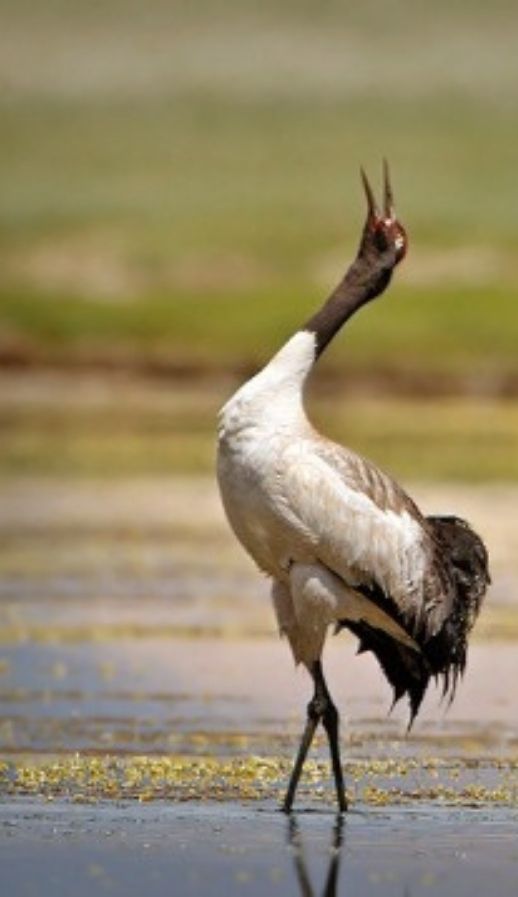
Ladakh
North India, the land of Ladakh, looks as though it was made for birdwatching and photography.

Gir National Park Gujarat
Sometimes it is not just the species spotted but also the amazing moments. Some of our guests had the unique opportunity to witness the mating of Asiatic Lions in the Gir Forest, truly a special moment.

Delhi
Surajpur is an amazing wetland close to the nation’s capital. Apart from being one of the monsoon homes for the Bristled Grassbird, it is also home to another sought-after species: the Bengal Bush Lark.

Rajasthan
One advantage of living near the birding hotspot of Bharatpur is that you can see some amazing birds, like the graceful Sarus Crane, in your backyard during this lockdown
FAQ's
- What is the best time to visit South India for bird watching and wildlife photography?
-
The best time to visit South India for bird watching and wildlife photography is from November to March. During this period, the weather is pleasant, and bird activity is high due to migration patterns and breeding seasons.
- What kind of clothing should I pack for this trip?
-
Pack lightweight, breathable clothing in neutral colors to avoid disturbing wildlife. Include a warm jacket for cooler mornings and evenings, a rain jacket for unexpected showers, and sturdy walking shoes or hiking boots. Don't forget a hat, sunglasses, and sunscreen.
- What photography equipment is recommended for this trip?
-
A DSLR or mirrorless camera with telephoto lenses (200-500mm) for bird photography, a sturdy tripod, extra batteries, memory cards, and a lens cleaning kit. A wide-angle lens is also useful for landscape shots.
- Do I need any special permits to visit these wildlife areas?
-
Yes, certain areas require permits. Our guide or office will arrange these for you, but it’s good to carry identification and follow the instructions provided to ensure smooth access.
- Are there any health precautions I should take before the trip?
-
It's advisable to consult with your doctor about necessary vaccinations and medications, but largely it is safe. Carry a basic first aid kit, and make sure to stay hydrated and protected from insects with repellents.
- What is the accommodation like during the tour?
-
Accommodation ranges from comfortable hotels in cities to rustic lodges in wildlife reserves. All accommodations are selected to provide a balance of comfort and proximity to nature.
- Can I rent photography equipment locally if needed?
-
While it's best to bring your own gear, some major cities like Bangalore and Cochin may have rental services. However, availability can be limited, so it's recommended to bring your own equipment.
- How physically demanding is this itinerary?
-
The itinerary includes moderate physical activity, such as walking on trails, climbing small hills, and occasional long drives. Participants should be in good health and prepared for varying weather conditions and terrain.
- What kind of wildlife can I expect to see in these locations?
-
Expect to see a diverse range of species, including Indian Elephants, Tigers, Leopards, Indian Bison (Gaur), Nilgiri Tahr, and numerous bird species like the Malabar Trogon, Great Hornbill, and various endemic species of the Western Ghats.
- Are there opportunities for night photography or nocturnal wildlife viewing?
-
Yes, night walks in locations like Ooty and Top Slip offer chances to see nocturnal wildlife such as owls, nightjars, and small mammals. Your guide will assist in using appropriate techniques for night photography.
- What safety measures are in place during safaris and night walks?
-
Safety measures include travelling with experienced guides, following park rules, staying within designated areas, and using appropriate gear like leech socks in certain areas. Guides will provide safety briefings before activities.
- How do I maximize my chances of seeing a tiger or leopard?
-
The best chances of seeing big cats like tigers and leopards are during early morning or late afternoon safaris when these animals are most active. Staying quiet, being patient, and following the guide's instructions will increase your chances. We will try in Mudumalai.
- How do I maximize my chances of seeing a tiger or leopard?
-
The best chances of seeing big cats like tigers and leopards are during early morning or late afternoon safaris when these animals are most active. Staying quiet, being patient, and following the guide's instructions will increase your chances. We will try in Mudumalai.
- What kind of meals are provided during the tour?
-
Meals typically include a mix of local and continental cuisines, with an emphasis on fresh, locally sourced ingredients. Special dietary requirements can usually be accommodated with prior notice.
- Can I charge my electronic devices at the accommodations?
-
Most accommodations provide facilities to charge electronic devices. However, it’s advisable to carry a universal adapter and extra batteries or power banks for remote locations.
- Is it safe to drink tap water in these locations?
-
It’s recommended to drink bottled or filtered water to avoid any health issues. Most accommodations provide safe drinking water, and it’s wise to carry bottled water during excursions.
- Are there restroom facilities available during safaris and long drives?
-
Restroom facilities are available at lodges and designated areas in national parks. During long drives, your guide will make stops at clean and safe facilities but there are not many.
- What should I do if I encounter dangerous wildlife?
-
Always follow the guide’s instructions. Maintain a safe distance, avoid sudden movements or loud noises, and never attempt to approach or feed wild animals. Your guide is trained to handle such situations.
- Can I bring my children on this tour?
-
While children are welcome, the itinerary includes activities that require patience and quietness, which may be challenging for very young children. Older children with an interest in wildlife and photography will enjoy the experience.
- How do I prepare for high altitudes in locations like Ooty and Munnar?
-
To prepare for high altitudes, stay hydrated, avoid strenuous activities on the first day, and get adequate clothing. If you have a history of altitude sickness, consult your doctor before the trip.
- What are some tips for ethical wildlife photography?
-
Ethical wildlife photography includes respecting wildlife by maintaining a safe distance, not disturbing natural behaviours, avoiding flash photography that can startle animals, and adhering to park regulations. Always prioritise the welfare of the animals and their habitats.


